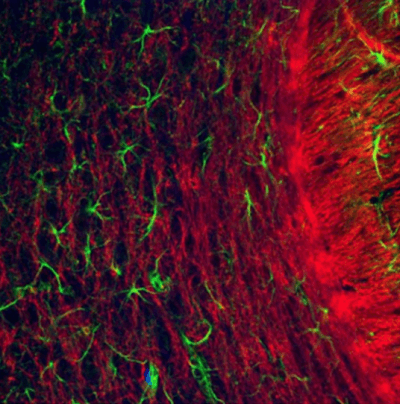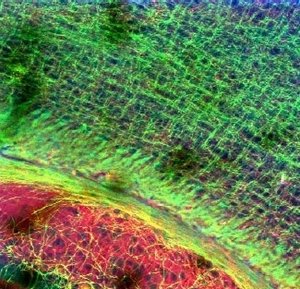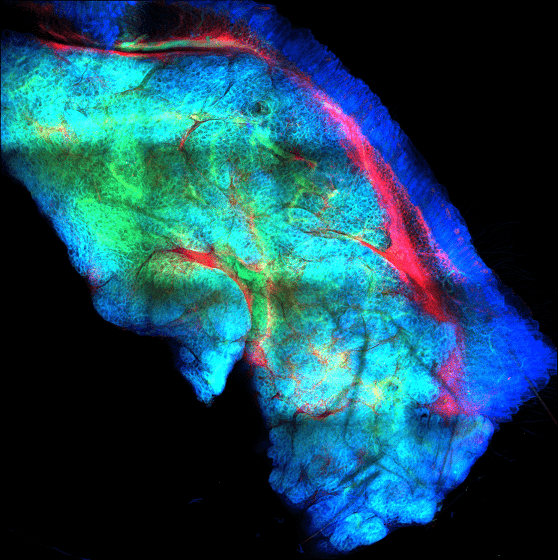
True 3D Image Analysis
We have found that while many researchers have been able to implement 3D tissue imaging in their labs, many struggle with analyzing and processing the large data sets that are generated. We work closely with our Clients to thoroughly understand the types of questions that they want to address through 3D tissue imaging and select an analysis approach through which we distill this large data set into a report with actionable insights. We have developed custom-built software tools specifically for 3D image analysis, which enable us to analyze the enormous 3D data sets generated through confocal microscopy and light sheet microscopy. We use this software for a diverse set of research questions such as quantifying tumor volume, areas of fibrosis, quantifying the extent of therapeutic antibody penetration, evaluating protein expression in different parts of a tissue, and determining the distribution of selected markers by cell type.

Multiplexed 3D Imaging Analysis
Shifting pathological analysis from a single marker, two-dimensional slices and qualitative analysis to a multiplex, three-dimensional and quantitative paradigm dramatically increases the amount of data that a researcher will generate from tissue analysis, however also increases the complexity of the research questions that can be addressed. For example, we can quantify aspects about the blood vessel network within a tissue, and measure how drug treatments affect the pathology and growth of new blood vessels. Furthermore, multiplex immunolabeling allows for different sub-populations of cells to be evaluated in tandem. 3D imaging enables different regions of tissues (e.g. hippocampus vs cerebellum) to be evaluated for differential effects from compound treatment across the entire region within the whole organ. These complex end points are not possible with a traditional qualitative pathology approach and are simply too much data to interpret manually. Applying automated image analysis and machine learning allows for comprehensive evaluation of effects within tissue samples.

Data to Reports
Our expertise is in the ability to transform huge imaging data sets into easy-to-read reports for our Clients, so that they can make more informed decisions during their drug discovery and development programs. We work closely with our clients to identify their research needs, and carefully distill the data we generate into actionable reports.
